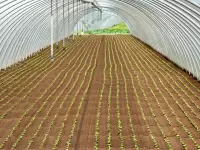
Foresters plan, maintain, and preserve forests and forest resources for public and private use. They may protect wilderness areas, enhance habitats for a variety of species, facilitate public recreation, and manage fires. Many foresters help manage public areas, balancing wilderness protection and recreation in beautiful, inspiring, natural areas with timber needs.
What Do Foresters Do?
Foresters may work closely with professionals in other fields, such as entomology, geology, hydrology, soil science, and wildlife biology. Foresters share ideas and develop plans with other agencies, as well as with citizens' action groups.
Professional foresters may multitask across several areas of responsibility, or specialize in a particular area such as soil science, fire suppression, or pest management. Foresters typically develop or manage plans for:
- Wilderness protection
- Timberland improvement
- Habitat enhancement
- Timber sales
- Tree nursery operations
- Public recreation
- Fire management
Forestry technicians help implement these measures by:
- Working on a fire suppression team
- Constructing or maintaining trails
- Maintaining campground facilities and assisting visitors
- Monitoring forest use and enforcing regulations
- Planting trees and shrubs to stabilize soils
- Conducting inventories, classifying species and resources, and assessing forest health
- Marking trees to be cut, or preserved
Where Does a Forester Work?
Foresters are almost always working outdoors improving trails, assessing forest health and resources, or involved in a variety of other activities. Researchers and teachers may work in labs and classrooms.
The amount of human interaction can vary, depending on duties. While some foresters work primarily in backcountry areas, others who work at campgrounds, in education, or fire suppression interact with others on a daily basis.
With over 30,000 permanent employees in hundreds of locations across the country, the USDAForest Service is a major employer of foresters. Many Forest Service employees work in forest and range research, and others advise state and private partners across the country. Foresters also work at the state government level.
Foresters may also work in private industry for forest consultancies, timberland management companies, forestry firms and lumber companies. They may also work for conservation organizations, or teach at colleges and universities.
The West coast (California, Oregon, Washington, and Idaho), the Great Lakes area (Minnesota, Wisconsin), the Southeast (Florida, Alabama, North Carolina, Virginia), and Pennsylvania are the areas employing the largest numbers of foresters.
What Is a Typical Forester's Salary?
According to the Bureau of Labor Statistics, the median salary for foresters was $64,010 as of May 2020. Foresters working for the federal government earned the most during this time with a median salary of $78,960.*
Forestry Jobs
Forester careers involve all aspects of the forest lifecycle including harvesting, restoration, protection of fragile areas, and recreation. Duties vary significantly from job to job, but the following list includes typical job duties one might encounter as a forester:
- Facilitate reforestation plans from inception to completion and management
- Assist in selective cutting or clearing operations
- Assess forests for reclamation and rehabilitation work
- Create biomass resources like nurseries, sites, seeding, planting, controlling weeds, and pruning
- Harvest seeds and cultivate young trees
- Review research and literature relating to current discoveries and best practices
- Review health and safety data for the forest, region, and time of year
- Collect field and control samples of ecology and non-living media for analysis
- Measure forest metrics on an ongoing basis
- Enforce fire regulations
- Survey and map forest areas and access roads
- Encourage new growth
- Use herbicides, insecticides and silvicides to implement pest, weed, and disease control.
- Monitor forest operations from a regulatory compliance perspective
- Issue environmental field reports
- Work in remote locations in all weather conditions
- Process forest specimens and samples
- Have working knowledge of all tree species and their characteristics, as well as their ecological impact on the forest
Senior forester careers focus on leading teams with their management and administrative skills. Some of the additional tasks that accompany this senior position are:
- Approve the use of herbicides, silvicides and insecticides for use in the forest
- Oversee sample management
- Ensure accuracy in data recording
- Use computer modelling to analyze forest data and predict outcomes
- Collaborate with other industry professionals to contribute information to long-term management plans and reporting procedures
- Communicate with clients, government departments, and the public
- Oversee clearing actions and replantation actions
- Oversee quality and safety controls for all timber handling processes including sawmilling, storage, transportation procedures, and inspection, sorting, and drying
- Have working knowledge of all species and their impact on local ecology
What Is the Job Demand for Foresters?
Forestry is projected to grow at a rate of 7% between 2020 and 2030. The majority of this growth is expected to occur within federal and state forest lands in the Western United States.*
What Are Education Requirements for Foresters?
Professional forestry positions generally require a bachelor's degree. Forestry programs include foundational courses on biology, chemistry, and other physical sciences, as well as courses on natural resources and environmental sciences. Since most professionals use GIS/GPS and remote sensing skills, courses on these technologies are also beneficial. Many universities and colleges offer baccalaureate degrees in forestry accredited by the Society of American Foresters (SAF). College graduates may be hired by the USDA Forest Service at the GS-5 or GS-7 grade level. After a year or two in training and developmental positions, they may be promoted to the GS-9 grade level. Master's or Ph.D. degrees are required for research positions.
Many forest technician positions require a two-year degree from a technical college recognized by SAF. However, many technical positions within the Forest Service don't require college degrees, while still offering opportunities for advancement.
Foresters and forest technicians may need to be licensed or registered in some states. Voluntary professional certification is available through SAF.
Degrees Related to Forestry
What Kind of Societies and Professional Organizations Do Foresters Have?
- Founded in 1900 by Gifford Pinchot, The Society of American Foresters (SAF) (http://www.eforester.org/) is the most prominent professional association for foresters in the world. The society advances the practice of forestry, and provides information and networking opportunities to foresters and natural resource professionals.
- The National Association of State Foresters (NASF) (http://www.stateforesters.org/) is a non-profit organization for the directors of forestry agencies throughout the United States.
*2020 US Bureau of Labor Statistics salary figures and job growth projections for environmental scientists and specialists reflect national data not school-specific information. Conditions in your area may vary. Data accessed September 2021.





